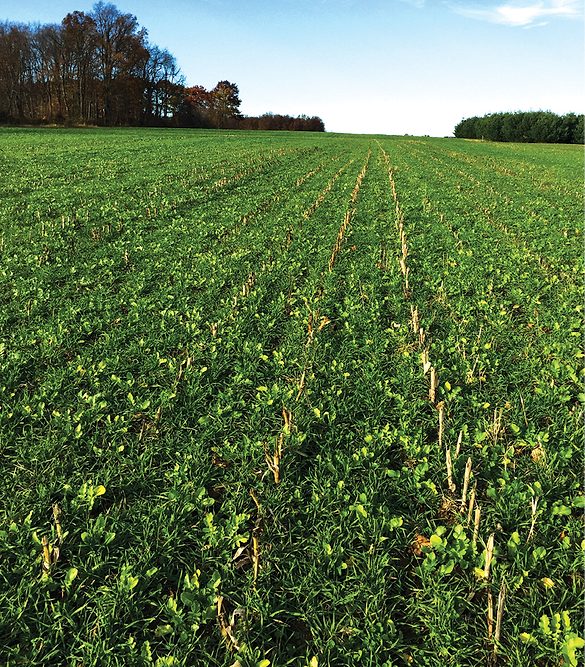By: Aaron Viner
Drought has been prevalent in the northern and western portions of the Corn Belt in recent growing seasons, while southern parts of the Midwest have seen flooding. Cover crops impact both wet and dry soils in the spring.
The U.S. Drought Monitor showed some relief ahead of spring, but many Iowa and northern Illinois counties still find themselves in abnormally dry or drought classifications. Two counties on Iowa’s western border, Woodbury and Monona, are classified as severe drought.
Iowa State University field specialist Mark Licht noted subsoil moisture levels were much improved ahead of the winter in northwest Iowa. Soil moisture levels improved by nearly 3 inches from fall 2020 to fall 2021 in that region, Sorenson said, with counties such as Osceola and Ida still showing levels around 6 inches. Typically, Iowa soils have the ability to hold 10 to 11 inches of moisture in the top 5 feet of soil.
“I was talking with someone in the Storm Lake, Iowa, area and looking at the drought monitor it shows that,” Licht said. “But our water table is probably a little lower than it normally would be in the spring of the year.”
Licht said if the tile lines are running, that’s good evidence enough moisture has been placed back in the soil.
“I think there are parts of the state where tile lines are starting to run again, and other parts that are probably still on the dry side,” Sorenson said.
Cover crops can have a significant effect on both dry and wet soils. If conditions are overly wet, keeping them in the ground longer soaks in more moisture and make fields easier to work when planting or doing early field work. In dry soils, earlier termination may be advised.
“Cover crops will reduce some soil surface water evaporation, just because you won’t have direct sunlight hitting on it,” according to Licht. “Soils will be slightly cooler. It will catch snow, as well, all winter long. Fields that have had high-residue cover or cover crops had more snow cover than fields that were tilled as well.”
Where cover crops can be difficult are in dry springs, he said. Cover crops will use the water built up in the soil profile, possibly robbing it from the corn or soybean crop being planted.
However, anticipating a dry spring is difficult, particularly for those who are planting cover crops in September or October. Research shows that skipping a year of cover crops isn’t detrimental to the soil, there are too many uncertainties to base that decision around soil moisture.
“You could skip a year and be OK,” Licht said. “The challenge is you are doing it preemptively. If you skip it in the fall thinking it will be a dry spring but it ends up being wet, you’ve lost a year. I would say not necessarily skip a year but in March or early April, reassess where the soil moisture is. Then you can make your termination decision from there.”





Post a comment
Report Abusive Comment